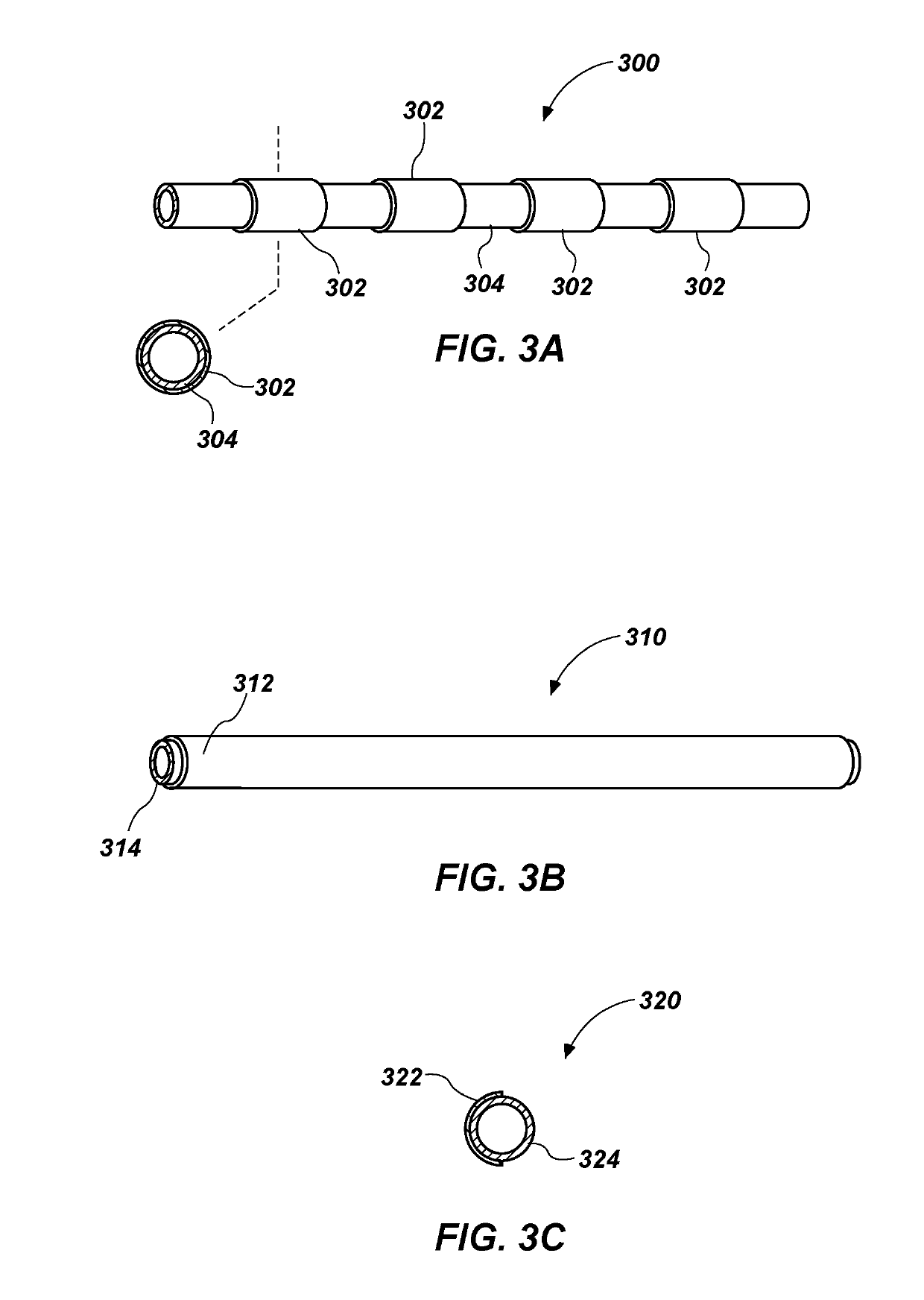Identifying subterranean structures using amorphous metal markers
a technology of amorphous metal and subterranean structures, which is applied in the direction of mechanical equipment, instruments, and reradiation, etc., can solve the problems of buried clay, ceramic or concrete structures, and cannot be found using conductive or induced current techniques, and the surrounding earth must be disturbed,
- Summary
- Abstract
- Description
- Claims
- Application Information
AI Technical Summary
Benefits of technology
Problems solved by technology
Method used
Image
Examples
Embodiment Construction
[0017]The following description and the drawings sufficiently illustrate specific embodiments to enable those skilled in the art to practice them. Portions and features of some embodiments described herein may be included in, or substituted for, those of other embodiments.
[0018]The present description addresses methods and apparatus present for identifying subterranean structures using amorphous metal markers associated with the structures. In many examples, the amorphous metal marker will include one or more sections of an amorphous metal foil within a protective enclosure sufficient to prevent contact between surrounding Earth and the amorphous metal foil, which could cause corrosion or other degradation of the amorphous metal foil.
[0019]The amorphous metal foil marker will be sized relative to the intended installation to result in a localized variation in the Earth's magnetic field of a selected magnitude which can be detected. In many examples, such detection may be performed u...
PUM
 Login to View More
Login to View More Abstract
Description
Claims
Application Information
 Login to View More
Login to View More - Generate Ideas
- Intellectual Property
- Life Sciences
- Materials
- Tech Scout
- Unparalleled Data Quality
- Higher Quality Content
- 60% Fewer Hallucinations
Browse by: Latest US Patents, China's latest patents, Technical Efficacy Thesaurus, Application Domain, Technology Topic, Popular Technical Reports.
© 2025 PatSnap. All rights reserved.Legal|Privacy policy|Modern Slavery Act Transparency Statement|Sitemap|About US| Contact US: help@patsnap.com



